$100 Website Offer
Get your personal website + domain for just $100.
Limited Time Offer!
Claim Your Website Now
Introduction to Haridwar, Uttarakhand
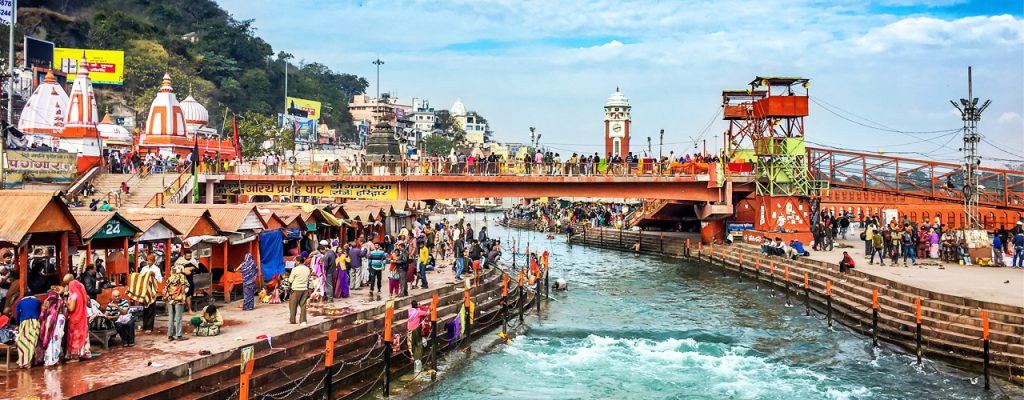
Overview of Haridwar
Haridwar, often referred to as the “Gateway to the Gods,” is one of the seven holiest cities in India. Located in the state of Uttarakhand, Haridwar is a revered destination for Hindu pilgrims and spiritual seekers. The city is known for its sacred river, the Ganges, which flows majestically through it, offering a spiritual touch to the serene landscape. Haridwar is a bustling hub of temples, ashrams, and ghats, attracting millions of visitors each year who seek spiritual solace and enlightenment.
Significance in Indian Culture and Spirituality
Haridwar holds a profound place in Indian culture and spirituality. It is believed that a dip in the holy waters of the Ganges can cleanse sins and lead to salvation. The city is a prominent location for the Kumbh Mela, one of the largest religious gatherings in the world, held every 12 years. This event draws millions of pilgrims who come to bathe in the sacred river, seeking spiritual purification.
The daily Ganga Aarti ceremony at Har Ki Pauri is a mesmerizing spectacle that captivates both locals and tourists. This ritual involves the offering of prayers and the lighting of lamps along the riverbank, creating a serene and spiritual ambiance. Haridwar is also home to several ancient temples and ashrams, making it a center for yoga, meditation, and spiritual learning.
Geographic and Climatic Details
Geographic Location:
- Haridwar is situated in the northern state of Uttarakhand, India, at the foothills of the Shivalik range of the Himalayas.
- The city is located at an elevation of approximately 314 meters (1,030 feet) above sea level and covers an area of about 12.3 square kilometers (4.7 square miles).
Climate:
- Spring (March to April): Pleasant weather with temperatures ranging from 15°C to 30°C (59°F to 86°F).
- Summer (May to June): Warm temperatures range from 25°C to 40°C (77°F to 104°F), with occasional heatwaves.
- Monsoon (July to September): Characterized by heavy rainfall and humidity, temperatures range from 20°C to 30°C (68°F to 86°F).
- Autumn (October to November): Cool and comfortable weather with temperatures between 15°C and 30°C (59°F to 86°F).
- Winter (December to February): Cold and chilly, with temperatures ranging from 5°C to 20°C (41°F to 68°F).
Haridwar’s geographical setting and pleasant climate make it an ideal destination for spiritual seekers and nature lovers alike. The city’s natural beauty, coupled with its rich spiritual heritage, offers travelers a unique opportunity to experience India’s diverse cultural and spiritual landscape. Whether you’re looking to immerse yourself in spiritual practices, explore ancient traditions, or simply enjoy the natural beauty, Haridwar has something for every traveler.
Getting There
Air Travel
Haridwar is accessible by air through nearby airports. Here are the details of the nearest airports and transport options:
| Nearest Airport | Distance to Haridwar | Transport Options | Transport Details | International Access |
|---|---|---|---|---|
| Jolly Grant Airport, Dehradun | 35 km | Taxis, Buses | Taxis take about 45 minutes; limited direct buses | Domestic flights primarily |
| Indira Gandhi International Airport, New Delhi | 220 km | Trains, Buses, Taxis/Car Rentals | Direct trains and regular buses; taxis for personalized travel | Major international gateway, fly to Delhi, then train or taxi |
Road Access
Haridwar is well-connected by road with regular bus services and accessible driving routes. Here are the details:
| From City | Route | Travel Time | Transport Options | Driving Tips |
|---|---|---|---|---|
| Delhi | NH334 via Meerut and Roorkee | 5 to 6 hours | Regular buses, taxis, self-driving | Check traffic conditions, fuel up before leaving |
| Dehradun | NH34 or state highway | 1 to 1.5 hours | Taxis, self-driving | Good road conditions, follow navigation |
| Rishikesh | NH34 | 30 minutes to 1 hour | Taxis, buses, self-driving | Quick route, easy navigation |
Train Options
Haridwar Junction is well-connected by train to major cities across India. Here are the key train options:
| City | Train Options | Booking Tips |
|---|---|---|
| Delhi | Shatabdi Express, Jan Shatabdi Express, Mussoorie Express | Advance booking recommended, choose from AC and Sleeper classes |
| Mumbai | Dehradun Express | Book in advance, limited direct trains |
| Kolkata | Howrah-Dehradun Express | Use IRCTC app for booking, plan ahead for festivals |
| Varanasi | Varanasi-Dehradun Express | Check train schedules, advance reservations advised |
Best Time to Visit Haridwar
Haridwar, a spiritual and cultural hub in Uttarakhand, offers a unique blend of religious experiences, natural beauty, and vibrant festivals. Here’s a breakdown of the best times to visit based on weather, spiritual activities, and tourist seasons:
Weather Through the Seasons
Spring (March to April):
- Weather: Pleasant and mild, with temperatures ranging from 15°C to 30°C (59°F to 86°F).
- Highlights: This is an ideal time to visit Haridwar as the weather is comfortable, making it perfect for sightseeing and participating in outdoor activities.
Summer (May to June):
- Weather: Warm, with temperatures ranging from 25°C to 40°C (77°F to 104°F).
- Highlights: Despite the heat, this period attracts pilgrims and tourists for spiritual reasons. Evenings near the Ganges are cooler and refreshing.
Monsoon (July to September):
- Weather: Rainy and humid, with temperatures ranging from 20°C to 30°C (68°F to 86°F).
- Highlights: The landscape becomes lush and green, but heavy rains might disrupt travel plans. However, this is a peaceful time to visit if you prefer fewer crowds.
Autumn (October to November):
- Weather: Cool and pleasant, with temperatures ranging from 15°C to 30°C (59°F to 86°F).
- Highlights: The post-monsoon period offers clear skies and beautiful weather, ideal for exploring the city and nearby attractions.
Winter (December to February):
- Weather: Cold, with temperatures ranging from 5°C to 20°C (41°F to 68°F).
- Highlights: The winter season is chilly but manageable, and the atmosphere is serene, perfect for those seeking spiritual solace.
Recommended Times for Spiritual Activities and Festivals
- Kumbh Mela (Every 12 Years) and Ardh Kumbh (Every 6 Years): These grand events attract millions of devotees from around the world, offering a unique and vibrant spiritual experience.
- Kanwar Mela (July to August): This is one of the largest religious gatherings in India, where devotees carry holy water from the Ganges to their hometowns.
- Ganga Dussehra (May to June): Celebrated to worship the descent of the Ganges on Earth, this festival is marked by special rituals and ceremonies along the riverbanks.
- Diwali (October to November): The festival of lights is celebrated with great enthusiasm in Haridwar, offering a chance to experience traditional rituals and festive vibes.
Peak Tourist Times Versus Quieter Periods
- Peak Tourist Times:
- March to June: Spring and early summer see a high influx of tourists due to favorable weather and school vacations.
- Festivals: Major festivals like Kumbh Mela and Diwali draw large crowds.
- Quieter Periods:
- Monsoon Season (July to September): Despite the rains, this is a quieter time with fewer tourists, ideal for those seeking a peaceful experience.
- Winter Months (December to February): The cold weather keeps many tourists away, offering a tranquil environment for spiritual exploration.
Summary
- Best Time to Visit: March to April and October to November for pleasant weather and cultural experiences.
- For Festivals: Plan your visit during major festivals for a vibrant and immersive experience.
- For Peace and Solitude: Visit during the monsoon or winter months for a quieter atmosphere.
With its blend of spirituality, culture, and natural beauty, Haridwar offers a unique experience for every traveler. Whether you’re seeking spiritual fulfillment or simply exploring the rich culture, Haridwar has something for everyone year-round.
Accommodations
Haridwar is one of the great pilgrimage centers and serves as a gateway for the spiritual and cultural richness in the region. This part of India offers all types of accommodations, including luxury, mid-range, and budget ones, suitable for guests’ various budgets and needs. Below are some of the hotel recommendations for Haridwar:
Luxury Hotels
Ganga Lahari
- Location: Near Har Ki Pauri
- Amenities: Offers lavish accommodation with rooms facing the Ganges River. Available services are a spa, multi-cuisine restaurant, with yoga classes
- Best for: Travelers seeking luxury coupled with scenic views.
Haveli Hari Ganga
- Location: Situated on the bank of the Ganges.
Amenities: A heritage hotel with an excellent mix of traditional charm and modern facilities. It offers spa services, yoga sessions, and guides for temple tours. - Ideal for: The luxury seeker wanting a taste of rich culture.
Aalia on the Ganges
- Location: On the outskirts of Haridwar
- Amenities: Luxury villas, spa, plenty of outdoor activities, and a serene environment.
- Best for: Those who wish to be pampered in serenity.
Mid-Range Hotels
Hotel Krishna Ji
- Location: Near Har Ki Pauri
- Amenities: Comfortable rooms with modern facilities, a pure veg restaurant, and convenient access to all the major attractions.
- Best for: Families and solo travelers seeking comfort with accessibility.
Hotel La Casa
- Location: Near the city centre
- Amenities: Well-furnished rooms, a multi-cuisine rooftop restaurant, free Wi-Fi
- Best for: A homely budget-friendly stay for travelers
Regenta Orko’s
- Location: Main Haridwar-Rishikesh highway
- Amenities: The rooms here are spacious, and other facilities include a swimming pool, fitness center, and a multi-cuisine restaurant.
- Recommended for: Families and business travelers on a middle-range budget seeking additional facilities in the hotel premises.
Economy Stays
Hotel Alpana
- Location: Near Har Ki Pauri
- Features: The rooms are clean and comfortable, with basic facilities at a reasonable price.
- Best for: Budget travelers who would like to stay close to the city’s key attractions.
Zostel Haridwar
- Location: City center
- Amenities: Social backpacker hostel with dormitory and private rooms, a common lounge, and social activities
- Best for: Solo travelers and backpackers who want to make friends with like-minded travelers
BedHubs
- Location: Near Har Ki Pauri
- Facilities: Inexpensive, clean, central, and bare-bones.
- Ideal for: Those traveling on a budget and who also want access to the river and temples
Ashrams for Spiritual or Long-term Stays
Parmarth Niketan
- Location: Located near Rishikesh; within a very short driving distance from Haridwar
- Amenities: Spiritual retreats, classes on yoga, comfortable rooms, and peaceful surroundings.
- Ideal for: Spiritual seekers, interested in yoga, and meditation.
Shantikunj Ashram
- Location: Located on the outskirts of Haridwar
- Highlights: This place can provide basic accommodation for people who are really interested in spiritual learning, yoga, and meditation.
- Ideal for: People who wish to stay here for a long time for a spiritual stay, people who are interested in participating in events focusing on the spiritual boost.
Anandamayi Ma Ashram
- Location: Situated close to Har Ki Pauri
- Amenities: Offers simple abode to seekers and visitors to the meditation and devotional programs.
- Best For: Those looking for peace to do spiritual practices.
Family Stay Recommendations
- Must Visit Hotel: Godwin Hotel
- Amenities: Located Next to Har Ki Pauri; family suites available with a swimming pool and children’s play area.
- Good Hotel to Be with Family: The Urmi
- Amenities: Spacious rooms with family-friendly services.
- You also get babysitting services.
- Zostel Haridwar: A social hostel that believes in connecting solo travelers to similar souls.
- BedHubs: Budget accommodations with a mission to help solo travelers take on the road more affordably and closer to major sites.
Conclusion
There are all sorts of different categories of accommodation facilities available in Haridwar, within your budget and for your duration of stay. Be it luxurious, convenient, or spiritual in living, you will get it all in this lively city. It is always preferable to make advance bookings during high pilgrim seasons in order to avoid problems related to availability and the rates.
Major Attractions
Haridwar is unquestionably among the most sacrosanct cities of India, full of spiritual attractions, historical sites, and cultural activities. In this section, find a concise guide to the major attractions in Haridwar, focusing on ghats, temples, and historical and cultural sites:
Ghats
Har Ki Pauri
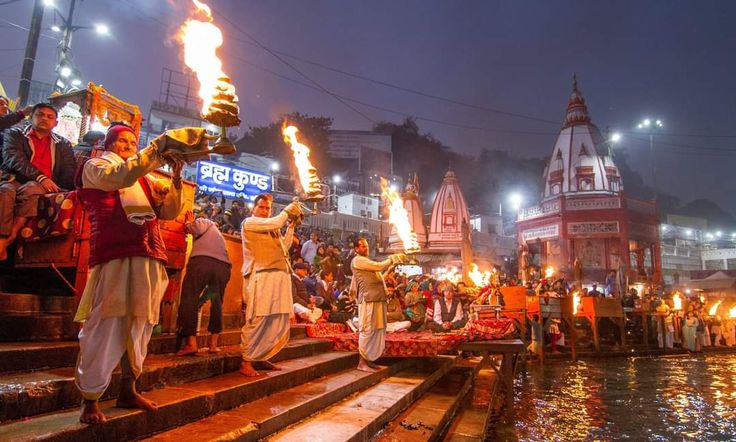
- Main Attraction: Har Ki Pauri, a ghat at which it is believed that the Ganges leaves the mountains and enters the plains; famous for evening Ganga Aarti.
- Why It’s Attractive: The spiritual atmosphere of the place is extremely alluring to pilgrims and tourists. Adding to this, a holy dip in the Ganges is an irresistible opportunity to many. The evening Ganga Aarti is such an enthralling moment that thousands of people get attracted to it every day.
- Best Time to Visit: The evening Aarti, just before sunset, is the best time for visiting the place. The place has visitors particularly on events like Kumbh Mela and Kanwar Yatra.
- Speciality: This ghat is considered especially famous in Hindu mythology, and its dynamic spiritual energy can attract visitors who have a deep cultural and religious experience.
Gau Ghat
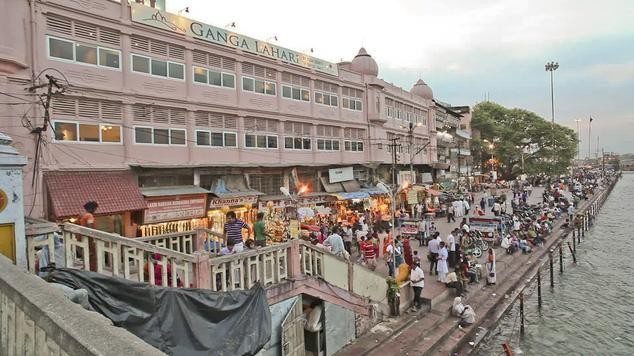
- Primary Attraction: Gau Ghat happens to be rather a lesser visited ghat of Haridwar. It is associated with atonement for the sin of cow slaughter. It is also believed that God himself might forgive a person for causing hurt to any loved one.
- Why It’s Attractive: Far removed from the noisy Har Ki Pauri, this ghat offers a rather tranquil and peaceful spot for reflection and meditation.
- Best Time to Visit: The early morning hours present an excellent time if one is looking to get some solitude and peace. Evenings are equally good times to visit this ghat, especially if one wants to attend the evening rituals.
- Claim to Fame: With its serene setting, Gau Ghat is just the place for those who want to get in touch with their spiritual side amidst peace and quiet.
Vishnu Ghat
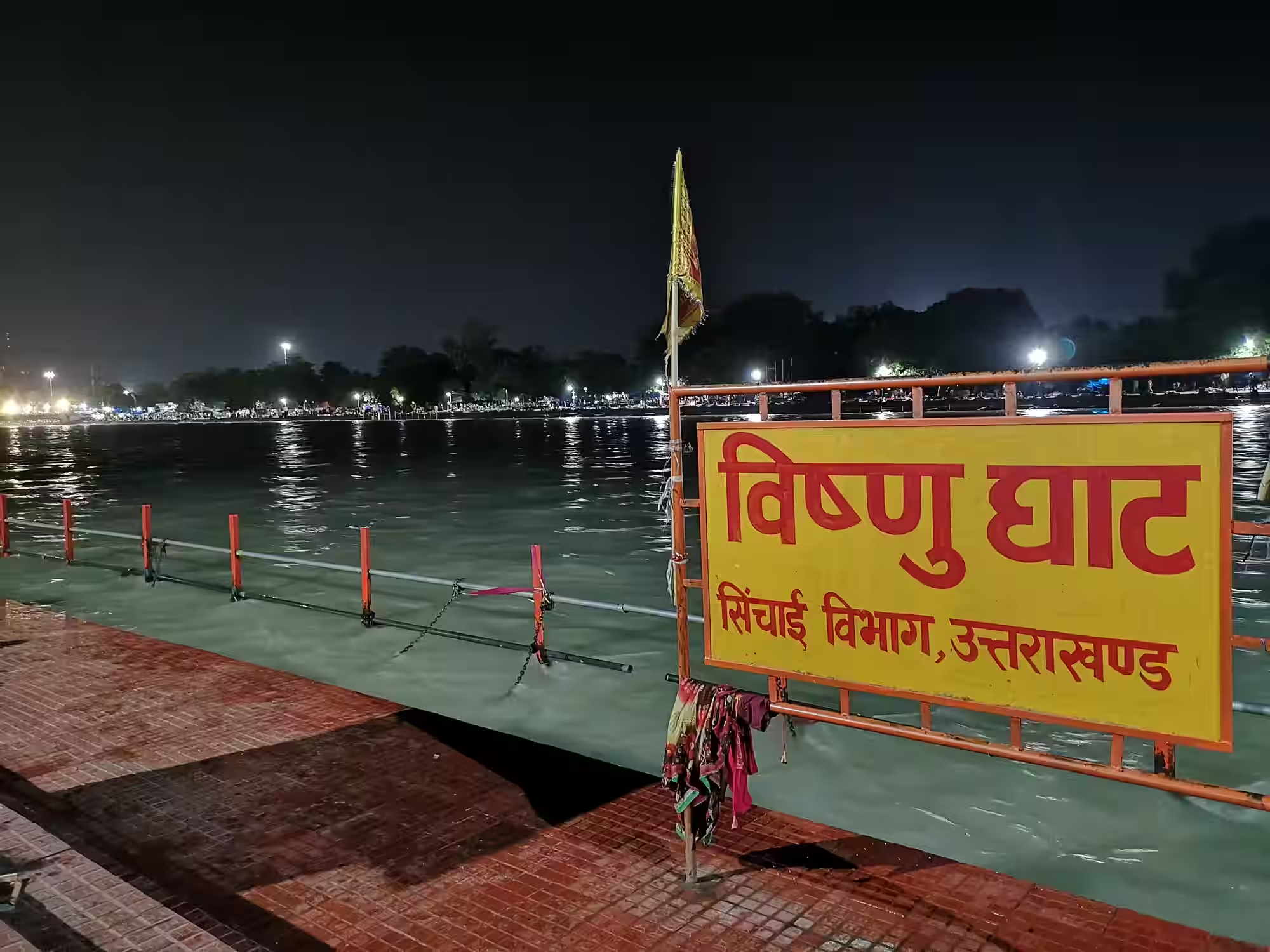
- Claim to Fame: This ghat was named after Lord Vishnu; hence, a lot of his devotees visit here to take a bath in the holy river to purify themselves.
- Its Allure: As opposed to Har Ki Pauri, this ghat is much less crowded, hence offering a much more peaceful spot for performing religious rites and rituals.
- Best Time to Visit: Early morning and late afternoons are best to visit for a peaceful experience.
- Specialty: A bath here is considered to wash away one’s sins and bring in spiritual merit.
Temples
Mansa Devi Temple
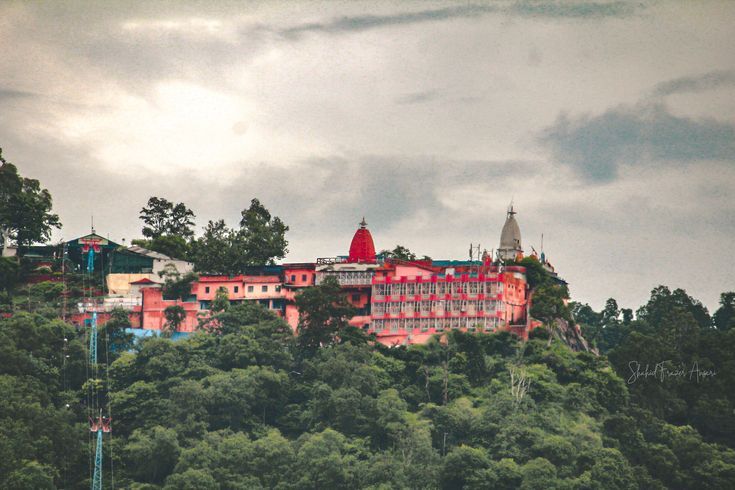
- Main Attraction: This is located at the top of the Bilwa Parvat, which is a temple devoted to Goddess Mansa Devi.
- Why It’s Attractive: One can reach this temple via a rope-way trolley that offers a bird’s eye view of Haridwar and its surroundings. The devotees tie threads in the sacred tree within the temple complex, signifying their wish or prayer.
- Best Time to Visit: Though the temple is visited during the whole year, but Navratri is the major time when it sees more visitors. Early morning visit will avoid the crowd and sun heat.
- Specialty: This temple is a great point of pilgrimage and the view from here is simply riveting. Hence, it’s a delight both spiritually and visually.
Chandi Devi Temple
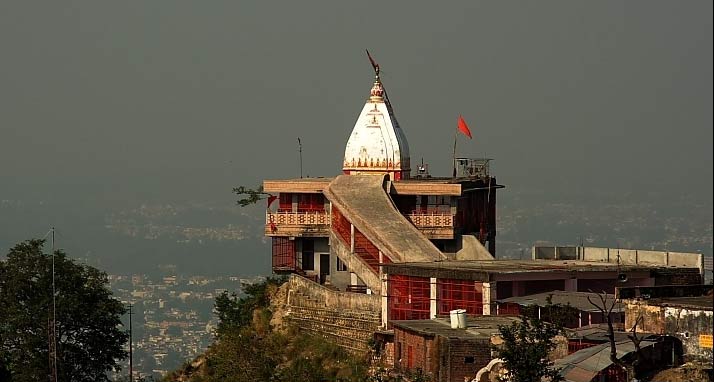
- Main Attraction: The temple lies on Neel Parvat, dedicated to Goddess Chandi, the form of Shakti. This is one of the Siddha Peethas and hence holds great religious significance.
- Why It’s Attractive: Provides the visitor with adventure in trekking or jolting cable car rides up to the temple. The temple is the sole holy site famous for fulfilling the wishes of its revered devotees.
- Best Time to Visit: The early morning hours and the end part of afternoons can be considered best for visiting, as the midday becomes really hot.
It is said that this is a place where Goddess Chandi rested after killing the demon kings Shumbha and Nishumbha, and hence, the spiritual importance of this place is of much significance.
Maya Devi Temple
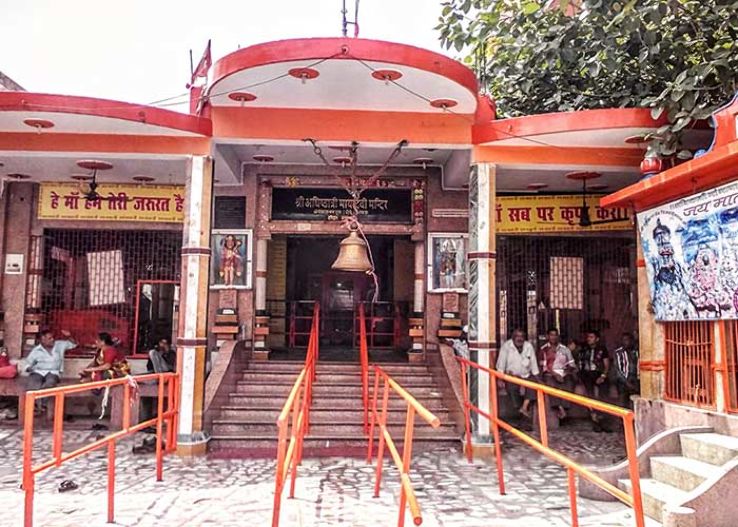
Point of Interest: The Maya Devi Temple is one of the Shakti Peethas and the goddess of adoration is Maya, which is a form of the Goddess Shakti. It is among three ancient temples of Haridwar.
- Why It’s Attractive: The temple is known for its spiritually charged atmosphere and ancient historical values, being the most endearing shrines for the goddess’s devotees.
- Best Time to Visit: Although the temple remains open throughout the year, Navratri is an excellent time to visit, especially if you are a devotee of this goddess.
- Specialty: People believe that it is the site where the heart and navel of Goddess Sati fell. Thus, it is considered a significant pilgrimage site.
Historical and Cultural Sites
Bharat Mata Mandir
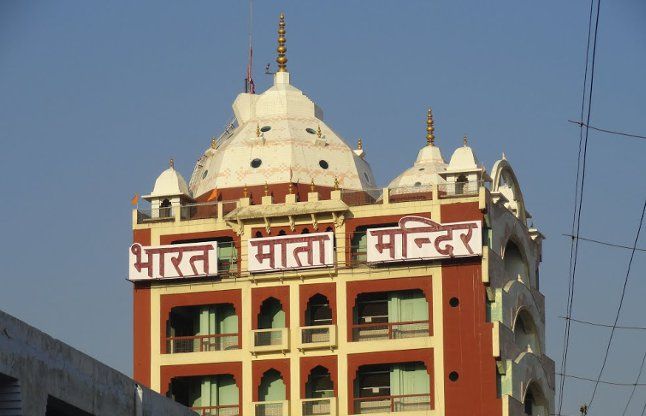
- Main Attraction: A unique temple that portrays Mother India showcasing the history, culture, and heroes of the country.
- Why It’s Attractive: Eight floors of this temple present a panoramic view of India’s heritage, historical happenings, freedom fighters, and diverse cultures.
- Best Time to Visit: The place remains open throughout the year and offers an educational and cultural journey for visitors.
- Specialty: Bharat Mata Mandir differs from other ordinary temples since it represents the cultural and historical journey of India as a whole.
Shantikunj
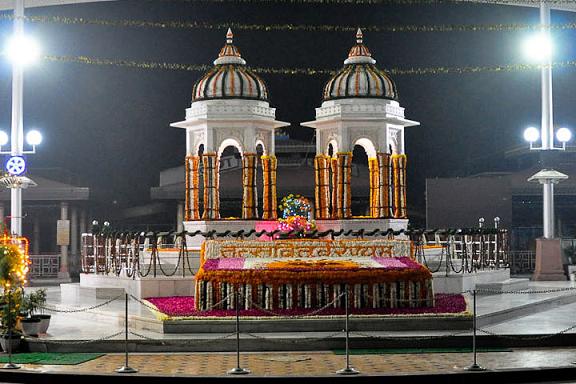
- Point of Interest: Shantikunj is the headquarters of the All World Gayatri Pariwar, a spiritual and social organization. A spiritual and education centre furthering one’s soul.
- Reasons to Visit: This campus offers courses and training in yoga, meditation, and spiritual disciplines, thus drawing those who are interested in self-improvement and community service.
- Best Time to Visit: Though it remains open throughout the year, there are some special programmes and spiritual retreats that take place at different times.
- Specialty: Holistic development of spiritual and other parameters related to personal development has emerged as a prime attraction for peace- and enlightenment-seeking visitors at Shantikunj Ashram.
Saptrishi Ashram
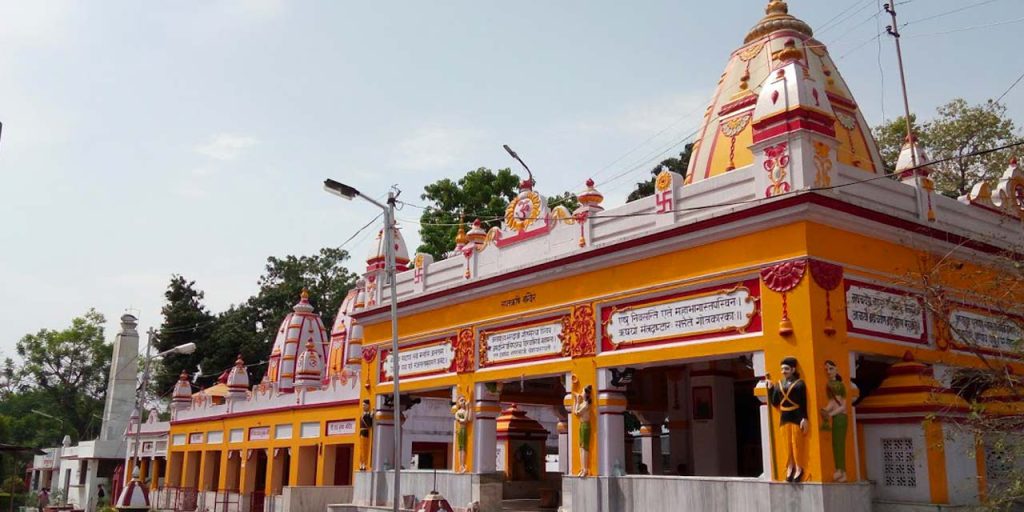
- Main Attraction: A peaceful retreat, Saptrishi Ashram is supposed to be a place where the seven great sages meditated.
- Why It’s Attractive: The ashram provides a peaceful, serene atmosphere for meditation and spiritual reflections. This place is also a learning center where Vedic studies are taught.
- Best Time to Visit: The ashram can be visited at any time of the year, as it is always relieving to move away from the noise of the city.
- Specialty: The spiritual ambiance, coupled with getting to learn about Vedic traditions and yoga, attracts visitors who seek peace and enlightenment.
Undoubtedly, Haridwar caters to diverse interests: spiritual seekers, history enthusiasts, and cultural explorers. October to March is the best time to visit because the weather remains pleasant for both sightseeing and other outdoor activities. From taking a holy dip or seeing ancient temples to getting an inside look at the rich cultural heritage of India’s tradition, Haridwar serves as the karmabhumi conducive to the fulfillment of every traveler’s interest.
Things to Do
Haridwar is a blend of spirituality, relaxation, and adventure. Whether you want to immerse yourself in daily rituals, find peace by undertaking Yoga and meditation, or be a part of adrenaline-pumping activities, Haridwar will have a bit for everyone. Here’s a detailed guide of things to do in Haridwar:
Daily Rituals and Ceremonies
Ganga Aarti
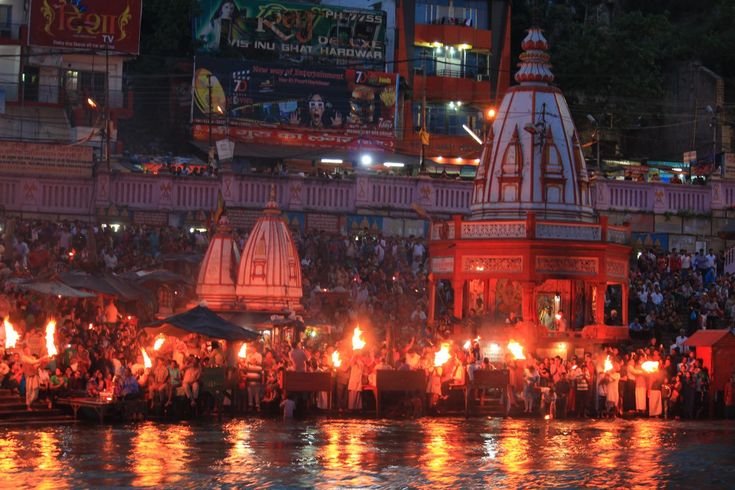
- Experience: The Ganga Aarti at Har Ki Pauri is simply spellbinding. Every day, a group of priests conduct an assimilated ritual with fire, flowers, and music for an offering to the Ganges River—this spiritual spectacle is a sight to behold.
- Why It’s Special: An aarti is soulful spiritual experience because it signifies the cleansing of the soul. With the sound of hymns and lamp floating on the river amidst the piety of the people, it becomes a purely unforgettable aura.
- Best Time to Attend: The Aarti happens every evening after the sun has set a little. Come early to grab a vantage position view as large crowds are attracted especially during festivals.
Temple Visits
- Experience: A visit to the various temples in Haridwar, including Mansa Devi, Chandi Devi, and Maya Devi, gives a wide insight into the great religious heritage of the city. Each temple in itself represents a unique kaleidoscope of rituals and legends.
- Specialty: Taking part in temple rituals and becoming a part of the dedication of pilgrims provides one with in-depth knowledge about Hindu culture and spirituality.
- Best Time to Visit: Early in the morning or late afternoon, to avoid crowds and summer heats.
Yoga and Meditation Retreats
Patanjali Yogpeeth
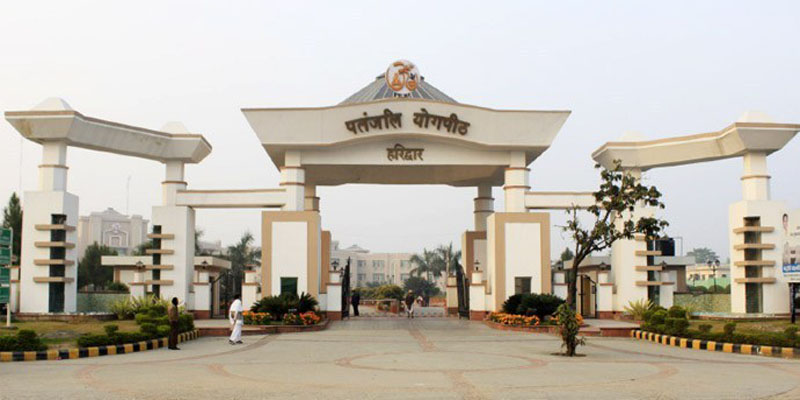
- Experience: Founded by Swami Ramdev, Patanjali Yogpeeth is one of the largest yoga institutes in India and imparts courses on yoga, Ayurveda, and meditation.
- Why It’s Special: It provides an opportunity to learn from experienced instructors and immerse yourself in traditional yoga and holistic health practices.
- Best Time to Go: Courses and retreats are available throughout the year. Pre-bookings for stays are advisable, especially for longer programs.
Shantikunj Ashram
- Experience: Shantikunj offers spiritual training and workshops in yoga, meditation, and workshops for self-improvement. This forms a peaceful retreat for people looking for spiritual growth.
- Why It’s Special: The integrated approach of the ashram towards development of personality, coupled with the serenity of its surroundings, is the reason why so many spiritual seekers get attracted to it.
- Best Time to Attend: All through the year; special programs and retreats are conducted periodically.
Sapt Rishi Ashram
- Experience: This ashram, set alongside the banks of Ganges River, offers peaceful surroundings for meditation and yoga to their guests.
- What makes it special: The serenity and beauty of nature in the ashram provides the ideal setting for spiritual reflection and rejuvenation.
- Best time to visit: Any season; early morning and evenings are best for meditation and yoga practices.
Things to do in Adventure
Trekking
The hills around Haridwar treks offer different modes and difficulties. Some of the most famous ones include Rajaji National Park treks and the Neelkanth Mahadev trek near Rishikesh.
- Why It’s Special: Provides soul-stirring view of the Himalayan foothills, lush forests, and gives one an opportunity to spot varied wildlife.
- Best Time for Trekking: October to April when the weather is cool and pleasant, and most of the trails are accessible.
River Rafting
- Experience: Rishikesh, located at a distance of about 20 kilometers from Haridwar, is the popular destination for river rafting along the Ganges. Grading of rapids varies from Grade I to Grade IV, thus suitable for both the beginner and experienced rafters.
- Why It’s Special: The rapids offer a thrilling ride. This was combined with some of the most spectacular scenery in the Himalayan foothills to make for truly great adventure.
- Best Time for Rafting: Rafting season runs from September to June. Peak conditions are March to May.
Wildlife Safari
- Experience: Rajaji National Park, located near Haridwar offers wildlife safari rides where you can sight elephants, leopards, tigers, and a variety of bird species.
- Why It’s Special: The park’s rich biodiversity and scenic beauty provide a captivating experience for nature lovers and wildlife enthusiasts.
- Best Time for Safari: November to June, as the park is closed during the monsoon season.
Bungee Jumping
- Experience: In addition to rafting, Rishikesh is also a destination for bungee jumping. It is one of India’s highest jumps at Jumpin Heights.
- Why It’s Special: Adrenaline rush and the view from top make it quite an exciting experience for adventure seekers.
- Best Time to Visit: Availability of the activity is year-round, but the best weather conditions are from September to June.
Conclusion
Haridwar is a city that pampers everybody’s interests, from spiritual practices to adventures brimming with thrill. Whether you come for the purposes of participating in sacred rituals, relaxing in peaceful ashrams, or heading out and experiencing the great outdoors, Haridwar has a huge array of experiences in its kitty that will stay with one long after this holy place has been left behind. The best time to visit is October to March, covering the major share of activities with optimal weather conditions congenial for any type of spiritual or outdoor activities.
Here’s a complete guide to cultural insights in Haridwar:
Haridwar is an extremely enriched cultural and spiritual center that provides visitors with a deep insight into India’s rich religious traditions and customs. Understanding these practices and observing the etiquette among locals goes a long way in enhancing your experience. Here’s a complete guide to cultural insights in Haridwar:
Hinduism in Haridwar
Haridwar happens to be one of the seven holiest places of Hinduism and forms an integral part of religious pilgrimages. The city encapsulates a gateway to the four pilgrimages (Char Dham) within the Uttarakhand region: Badrinath, Kedarnath, Gangotri, and Yamunotri.
- Ganga Worship: Ganges River falls under the category of being sacrosanct and forms an intrinsic part of various religious practices. Ritual baths are taken by pilgrims in the Ganges River for purification from sins and to attain Moksha.
–Temple Rituals: Many temples are visited by devotees who pray to deities by throwing flowers and lighting incense. Some of the most powerful temples are that of Mansa Devi, Chandi Devi, and Maya Devi.
- Ganga Aarti: It is a daily ritual where the river is worshipped with lamps and hymns. Indeed, it is a visual and spiritual spectacle that brings large crowds in its fold. Significance
- Spiritual Cleansing: Bathing in the Ganges is believed to purify the soul and body, providing spiritual renewal.
- Pilgrimage: Haridwar is a critical stop for pilgrims on the Char Dham Yatra, symbolizing a journey towards enlightenment and divine blessings.
- Community and Tradition: The practices of this city instill in the pilgrims as well as locals a sense of unity, thereby continuing age-old traditions unbroken.
Local Festivals
Kumbh Mela
- Introduction: The Kumbh Mela, celebrated every 12 years in Haridwar, is the largest religious gathering globally. It is celebrated by millions of devotees who come to bathe in the Ganges at an auspicious moment.
- Significance: The soul is believed to be cleansed by the festival, and all the sins are washed away by it. Spiritual debates, devotional songs, and religious congregations characterize it.
- Best Time to Visit: The exact dates differ in accordance with the Hindu calendar, but usually, it starts in the first months of the year.
Kanwar Yatra
- Overview: Kanwar Yatra is an annual pilgrimage of Lord Shiva’s devotees who are popularly called Kanwariyas, journeying to collect water from the Ganges and offer it to Lord Shiva.
- Significance: This yatra is representative of devotion and penance as the participants normally walk hundreds of kilometers in a barefooted state.
- Best Time to Attend: The pilgrimage takes place during the Hindu month of Shravan, that is, July-August.
Other Fests
- Diwali: This festival of lights is celebrated with lots of fanfare. During this time, beautifully lit homes and temples, along with prayers and festivities, mark the occasion.
- Holi: The festival of colors celebrated with vibrant colors and joy reflects the cultural exuberance of Haridwar.
Customs and Etiquette
General Etiquette
- Dress Modestly: While visiting temples and attending religious ceremonies, dress conservatively. Women should cover their shoulders and knees, while men should avoid shorts.
- Footwear: Remove your shoes before entering temples and holy sites. It is considered disrespectful to wear shoes in such sacred places.
- Silence and Respect: Keep strict silence or speak very softly in temples and during ceremonies. Observe local customs and rites even if some are not familiar.
Pilgrim Etiquette
- Bathing Rituals: When taking a dip in the Ganges, one is expected to be decently dressed, usually in traditional attire like a sari/dhoti. Stick to the flow of the devotees and strictly avoid soap or shampoo in the river.
- Photography: Don’t take random photographs, especially while any religious ceremony is in progress or inside any temple. Always ask for permission before clicking the picture of a person.
Social Customs
- Greeting: “Namaste” with the hands folded in front of the chest is the traditional and respectful way of greeting people.
- Food Practices: Vegetarianism is quite prevalent, and many locals observe fasting or other dietary restrictions during religious festivals.
- Almsgiving: It is customary to give alms to sadhus (holy men) and the poor; still, this must be done in an inconspicuous and very respectful way.
Conclusion
Haridwar represents a great, enriching cultural experience for travelers, embedded in religious traditions and practices. It is through awareness and respect for these customs that visitors can have deeper connections with the spiritual and cultural richness of the city, thus begetting experiences worth remembering. Join in the colorful festivals, watch the daily rituals, or explore the spiritual sites—Haridwar offers an enriching journey to every seeker.
Local Cuisine
- Must-try dishes and beverages
- Best places to eat (from street food to fine dining)
- Vegetarian-friendly dining options
Haridwar, being one of the major spiritual destinations, offers a range of gastronomic delicacies with vegetarian cuisine dominating the scene. The food here comes with the blend of different cultures and religious traditions. Here is how to go local in Haridwar, with the must-try dishes, places to eat at, and places that accommodate vegetarians:
Must-Try Dishes and Beverages
Dishes
- Chole Bhature
- Description: Spicy chickpea curry with large, fluffy fried bread.
- Why Try It: This is a rich and filling dish, enjoyed by the locals, that gives a taste for North Indian cuisine.
- Chaat
- Description: Many of the spicy snacks one gets at road-side stalls have been utilized in pani puri – from aloo tikki to papdi chaat.
- Why Try It: One should try chaat because of the tangy, spicy flavors, and it’s an absolute ‘must-eat’ for people who dig street food.
- Lassi
- Description: Refreshing drink made of yogurt, mostly flavored with cardamom or rose water and served in earthen pots.
- Why Try It: Lassi is perfect for cooling one down and complements the spicy dishes of Haridwar.
- Jalebi
- Description: Deep-fried batter spiral-turned sweet dish, soaked in sugar syrup
- Why Try It: The sweetness with a crispy feel to it makes this dish too hard to resist; it is mostly served either as a dessert or taken with breakfast.
- Aloo Puri
- Deep-fried puris, served with spicy potato curry, constitutes one of the most common breakfast items.
- Why Try It: This is a staple in Haridwar which, with its spicy and tangy taste, will give one the perfect explosion of tastes.
- Kachori Sabzi
- Description: Spicy chickpea curry with large, fluffy fried bread.
- Why Try It: This is a rich and filling dish, enjoyed by the locals, that gives a taste for North Indian cuisine.
Beverages
- Masala Chai
- Description: Black tea with milk and flavoring of spices.
- Why Try It: This masala chai has been like a staple in the homes of Indians, used as a comfort and flavored drink throughout the day.
- Badam Milk
- Description: A sweetened milk drink flavored with almonds and cardamom.
- Why Try It: This healthy drink refreshes and satiates, and it is mostly consumed during the summer months of the year.
Best Places to Eat
Street Food
- Hoshiyarpuri
- Specialty: Authentic North Indian thalis and delectable chole bhature.
- Chotiwala Restaurant
- Specialty: A eclectic blend of traditional Indian food with specialty in chaat and street food delicacies.
- Mohanji Puriwale
- Specialty: Delicious aloo puri and kachori sabzi come as its popular dishes, and it is liked by all the locals and tourists in town.
Fine Dining
- Sattvik Restaurant
- Specialty: Located at Haveli Hari Ganga, Sattvik gives a peaceful dining experience with its concentration on pure vegetarian food.
- Next 2 Restaurant
- Specialty: Equipped with a menu full of variety from North Indian, Chinese to Continental cuisine, it offers fine dining overlooking the Ganges.
- The Sitting Elephant
- Specialty: Atop Hotel Godwin, offering a panoramic unrivaled view of Haridwar, this restaurant offers a different dining experience and menu that includes a mix of Indian and international cuisines.
Vegetarian-Friendly Restaurants
Haridwar, being a religious city, has majorly vegetarian meals. Almost all restaurants and eating houses are more towards veggie-friendly options. This makes it, thus, a wonderful place for vegetarians. Notable among them are the following:
- Chotiwala Restaurant
- Having an elaborate menu of only veg items—North Indian thalis and street foods that are popular.
- Dada Boudir Hotel
Renowned for Bengali vegetarian dishes and an array of varieties in Indian sweets. - Annapurna Restaurant
- Famous for traditional pure vegetarian thalis and plain, homely food.
Conclusion
The culinary scene of Haridwar is an invigorating experience of tastes, mostly vegetarian, by itself standing to represent the spiritual and cultural identity of the city. Be it street food outlets with spicy chaat or fine dining restaurants in a multitude of cuisines, there is something to suit every taste bud. Be it spicy snacks or rich, sweet delicacies, Haridwar promises you a gourmet adventure that shall complement its spiritual appeal.
Shopping
Shopping in Haridwar offers great opportunities with traditional items, religious artifacts, and Ayurvedic products that one could buy. The local markets are lively and bound to give a taste of the rich culture. Here’s a guide on what to buy and tips for bargaining:
Local Markets and What to Buy
1. Moti Bazaar
Overview: Located near Har Ki Pauri, this is one of the most hustling and bustling markets of Haridwar and serves as a major tourist and pilgrim center.
What to Buy:
- Religious Artifacts: Idols of deities, prayer beads, incense sticks, and brass lamps.
- Traditional Clothing: Intricate and ornamentally designed kurtas, sarees, and dupattas.
- Ayurvedic Products: Herbal medicines, oils, and skincare products.
- Souvenirs: Key Chains, Postcards, and Decorative Items.
2. Upper Road
- Description: Famous for numerous shops selling spiritual and religious merchandise.
- What to Buy:
- Rudraksha Beads: Seeds of great spiritual significance, used for meditation and healing purposes.
- Books and Scriptures: Religious texts, spiritual books, guides on meditation and yoga.
- Organic Products: Herbal teas, natural supplements, and organic grocery.
3. Bara Bazaar
- Overview: Traditional market with a blending of religious and daily-used items.
- What to Buy:
- Puja Samagri: Items related to religious rituals, including flowers, coconut, and sacred threads.
- Spices and Dry Fruits: Various spices and nuts obtained locally.
- Handicrafts: Wooden and brass handicrafts with beautiful decorative pieces and paintings.
4. Kankhal Market
- Overview: Kankhal Market is one of the leading markets near the Daksha Mahadev Temple, which is famous for religious and spiritual items.
- What to Buy:
- Temple Bells: Brass bells used in temples and houses.
- Herbal Products: Ayurvedic medicines, tonics, herbal cosmetics, etc.
- Local Sweets: Tasty sweets including jalebi, laddoo, and barfi.
Tips for Bargaining and Shopping Etiquette
How to Haggle
- Start Low: The buyer must always start with a lower quote than that asked for by the seller, as in most markets, there is a culture of bargaining.
- Know the Value: Have a fair idea of what the item you want to buy usually sells for so that you avoid overpayment.
- Be Polite: Always bargain with a friendly attitude and a smile; being polite often leads to better deals.
- Walk Away: If the price doesn’t turn out as per your expectation, then don’t hesitate to leave. Sometimes, this will make the seller give a better price.
- Bulk Purchases: In case of purchasing more than one item from the same vendor ask for a discount on bulk purchases.
Shopping Etiquette
- Respect Local Customs: Dress modestly and respect local customs especially when buying religious items.
- Cash is King: Do carry sufficient cash since many small shops may not accept credit or debit cards.
- Quality Check: Items have to be checked for quality and authenticity, especially during the purchase of religious artifacts and Ayurvedic products.
- Fixed Price Shops: Some shops have fixed prices and there is no bargaining. Look out for boards indicating fixed prices or ask the shopkeeper.
- Cultural Sensitivity: All religious objects should be treated with respect; there is an attachment by locals to these objects.
Conclusion
Shopping in Haridwar offers a wide range of traditional and spiritually-oriented goods, almost the most perfect for souvenirs and gifts. You can feel the vibrant culture at the local markets of Moti Bazaar and Bara Bazaar and take some bits of this spiritually charged place, Haridwar, along with you. Keep in mind not to argue over prices rudely while bargaining, to create a pleasant experience.
Itineraries
Suggested itineraries for varying lengths of stay (1 day, 3 days, 1 week)
1-Day Itinerary
| Time | Activity |
|---|---|
| Morning | Har Ki Pauri: Holy dip in the Ganges and explore Moti Bazaar. |
| Afternoon | Mansa Devi Temple: Cable car ride and lunch at Hoshiyarpuri. |
| Evening | Chandi Devi Temple: Visit and attend the Ganga Aarti at Har Ki Pauri. |
3-Day Itinerary
| Day | Morning | Afternoon | Evening |
|---|---|---|---|
| Day 1: Spiritual Exploration | Har Ki Pauri: Start with a spiritual dip. | Explore Mansa Devi Temple and nearby markets. | Ganga Aarti at Har Ki Pauri, shopping at Bara Bazaar. |
| Day 2: Cultural Immersion | Visit Bharat Mata Mandir and Sapt Rishi Ashram. | Explore Daksha Mahadev Temple in Kankhal. | Traditional meal at Chotiwala Restaurant. |
| Day 3: Nature and Adventure | Head to Rajaji National Park for a wildlife safari. | Explore the park and have a picnic lunch. | Return to Haridwar, stroll along the ghats. |
1-Week Itinerary
| Day | Activities |
|---|---|
| Day 1: Spiritual Arrival | Arrive in Haridwar, visit Har Ki Pauri, settle in. |
| Day 2: Temple Tour | Visit Mansa Devi, Chandi Devi, and Maya Devi Temples. |
| Day 3: Cultural Exploration | Explore Bharat Mata Mandir, Shantikunj, and Sapt Rishi Ashram. |
| Day 4: Adventure Day | Visit Rajaji National Park for trekking and wildlife. |
| Day 5: Nearby Excursions | Visit Rishikesh for rafting and explore Beatles Ashram. |
| Day 6: Relaxation and Reflection | Yoga and meditation at an ashram or yoga center. |
| Day 7: Departure | Morning shopping at local markets, depart in the afternoon. |
Themed Itineraries
Religious Pilgrimage
- Day 1: Har Ki Pauri, Ganga Aarti, and evening prayers at the ghats.
- Day 2: Visit Mansa Devi and Chandi Devi Temples.
- Day 3: Explore Daksha Mahadev Temple, Maya Devi Temple, and Sapt Rishi Ashram.
Cultural Immersion
- Day 1: Visit Bharat Mata Mandir and explore Moti Bazaar.
- Day 2: Attend a cultural event or workshop at Shantikunj.
- Day 3: Explore local crafts and cuisine in Bara Bazaar.
Nature and Adventure
- Day 1: Wildlife safari at Rajaji National Park.
- Day 2: Trek to Neelkanth Mahadev Temple near Rishikesh.
- Day 3: River rafting and camping in Rishikesh.
Practical Information
Transportation, safety, and proper health facilities—these are a few things that come to mind when one plans a trip to Haridwar. Here’s all that you should know to move around the city hassle-free and to enjoy your trip:
Getting Around Haridwar
Auto-Rickshaws
- Availability: Auto-rickshaw is a very popular mode of transport in Haridwar. You easily find these all over the town.
- Fares: Fares are always negotiable but best agreed upon before the journey commences. Very few autos have meters, so the rate will need to be ascertained in advance.
- Convenience: Autos are the best mode of transport for short distances and good vehicles to drive through the narrow streets of this city.
Taxis
- Availability: Taxis may be hired from taxi stands or hotels, or can be summoned through apps like Ola or Uber.
- Fare: Taxis have fixed rates or can be hired for half and full-day sightseeing tours.
- Comfort: Taxis are more comfortable and convenient to cover bigger distances and for group travel.
Public Buses
- Service: Haridwar is also serviced by a network of public buses run by Uttarakhand Transport Corporation that takes care of all the main areas of the town.
- Fares: Buses are pretty cheap, with the fares being much lower than those of taxis and autos.
- Routes: Buses cover all major destinations like Har Ki Pauri, Railway Station and Bus Terminals but may not be that frequent or convenient as other modes of transportation.
Cycle Rickshaws
- Usage: Cycle rickshaws can be availed for short distances and are a traditional mode for intra-city travel.
- Fares: Fares, as with auto-rickshaws, are negotiable so agree on a price upfront.
They offer a leisurely and eco-friendly mode of going around the city.
Safety Tips for International Tourists
- Personal Belongings: Be cautious with your belongings and beware of pickpocketing in crowded places.
- Currency and Payments: Pay in local currency—Indian Rupees—for most transactions. Also, keep change handy to avoid inconvenience in payments. Major establishments accept credit cards.
- Cultural Sensitivity: One should dress modestly, particularly while visiting any religious place and secondly, respect local customs and traditions.
- Scams: Obviously, there are people who will fleece you with their service charges or pawn off fake goods, so be aware of such practices. Try to buy from known vendors and hire only verified transport services.
- Emergency Contacts: Always carry a list of local emergency numbers including the Police, who can be reached at 100, the Ambulance at 102, and the Fire Services at 101.
Health Care Facilities
Hospitals
- Ram Krishna Mission Hospital: This is a reputed hospital that provides all kinds of medical services and has an efficient emergency service too.
- Shriram Ashram Hospital: It is a general healthcare service hospital with a legacy of good service at an affordable price.
- District Government Hospital: This provides basic medical facilities and is open for emergency cases as well.
Pharmacies
- Availability: There are ample pharmacies, and they stock most kinds of prescription and over-the-counter medicines.
- Location: There are big markets and colonies located around most hospitals.
- Business Hours: Almost all pharmacies are open from morning till evening, and some are even available 24×7.
Health Tips
- Water Safety: Safe bottled or filtered water should be drunk. Avoid ice in drinks unless sure about its origin.
- Food Safety: Stick to freshly cooked food, avoiding raw or street foods from unsanitary places.
- Health Insurance: Make sure you have enough travel insurance that covers any kind of medical emergencies and hospitalization, etc.
Conclusion
The city of Haridwar is easily accessible with various modes of transport, but more importantly, it has that local atmosphere which never makes any stranger feel lost. With some of the safety tips taken and knowledge regarding health facilities, international tourists can stay safe and enjoy the spiritual city. Know these practical insights to plan your visit and make the most of it in Haridwar.
Maps and Navigation: Your Essential Travel Companion
Detailed Maps Showing Key Locations
Getting around a new place can get quite daunting. Having the right map makes the task easy. Here are some options you should check out:
- Google Maps: This would, without a doubt, be the most popular choice. It offers fantastically detailed maps with:
- Clearly marked roads, landmarks, and public transport views
- Real-time traffic updates
- Detailed lists of all the major points of interest, restaurants, hospitals, and much more
• Street View to feel the environment - OpenStreetMap: This is a ‘crowdsourced’ map that holds more depth of information, especially for rural areas and less-travelled regions.
- Offline Maps: For areas for which the signals are not good, some of the following might be helpful:
- Maps.me: These are detailed offline maps, and they come with search and navigation functions.
- OsmAnd: A very popular alternative, giving the greatest level of customization.
Navigating
- Plan Your Route: Use your map to figure out what you’ll be doing on your day before you leave. Take into account distance, traffic, opening hours.
- Check for Updates: Make sure that the map app is updated with new information. Road conditions and relevant spots change.
- Public Transport: Most cities are equipped with a decent public transport structure. It is not very costly to take a bus, train, or subway in the town.
- Walk or Bike: In small places, it is a good way to roam around and be healthy.
- Take a Real Map with You: Although e-maps are a very convenient solution, carrying a real map may be helpful if you ever need one.
Mobile Applications Useful for Travelers
Apart from maps, some apps can be real-time help for travelers:
- Booking Applications: Accommodation, flights, and transportation
- Language Translation Applications: To get past people
- Currency Converter Applications: So you can track your money
- City Guides: For food, things to see, and things to do in the night
- Trip Planning Apps: Organize your itinerary and make packing lists
Popular Navigation Applications:
- Google Maps
- Waze
- Apple Maps
- Here WeGo
- MapmyIndia (India only)
Remember: Technology is a great tool, but you should not always depend on it. Keep your wits about you, engage in conversations with locals, and enjoy the journey!
FAQs for Travelers Visiting Haridwar
The following include the list of some Frequently Asked Questions (FAQs) that travelers may have before planning to visit Haridwar, Uttarakhand. These address issues related to travel logistics, cultural norms, and several other key considerations:
Travel Logistics
**Q: How do I get to Haridwar from major cities in India? **
A: Haridwar is well-connected by road; by rail it enjoys a good network of trains from all over the country like Delhi, Mumbai, and Kolkata; and by air, one can travel to the nearest airport: Jolly Grant Airport in Dehradun, which is approximately 35 km away from Haridwar. Buses and taxis facility is well connected from the nearby cities.
Q. What is the best time to visit Haridwar?
The best time to visit would be from October to March when the climate is warm with a backdrop of a series of festivals and fairs, hence more vibrant in terms of culture.
Q: How is the accommodation facility here in Haridwar?
A: From budgetary lodgings to guesthouses and luxury hotels, ashrams—all categories of accommodations are available here. Advance booking is advisable during peak seasons or festivals.
Q: How do I get around Haridwar?
A: You can get around Haridwar in auto-rickshaws, cycle rickshaws, taxis, and public buses. Taxis and auto-rickshaws would be easy options for short distances; for longer ones, buses are an economic choice.
Cultural Norms
Q: What dress code is expected at the religious places of interest in Haridwar?
Dress decently and traditionally. Women need to cover their shoulders and knees. Men should avoid wearing shorts. It is appreciation if you cover your head while entering some temples.
Q: Do I need to go for Ganga Aarti?
A: It is not obligatory, but you must certainly get up to toast yourself to a lifetime spiritual experience by getting to the Ganga Aarti at Har Ki Pauri. It’s a beautiful ceremony that depicts the religious interest of the city.
Q. Can I click pictures at places of worship?
A: By and large photography is allowed in public areas, but it would be better to seek permission before photographing the interiors of temples or during any religious ritual. Do not click pictures of the bathing areas of pilgrims or their private moments; respect their privacy and sentiments.
Safety and Health
Q: Is Haridwar safe for solo travelers, especially women?
Haridwar, in general, is quite safe for a solo woman traveler. But as usual with travel, one must exercise some precautions, such as avoiding being alone in sequestered areas after dark and keeping one’s personal belongings safe.
Q: What special health precautions should I take?
A: Avoid waterborne diseases by drinking bottled or filtered water; eat freshly prepared food from reputable establishments. Consider getting travel insurance that will cover health emergencies.
Q: What do I do if there is a medical emergency?
A: Haridwar has a variety of hospitals and clinics, including Ram Krishna Mission Hospital and Shriram Ashram Hospital, to cater to one’s medical needs. Keep a list at hand with contact information for emergency services and the nearest healthcare facilities.
General Questions
Q: Will I easily be able to find ATMs and money-exchange facilities in Haridwar?
A: Yes, Haridwar has ample ATMs, especially at the prime tourist locations and local markets. Most banks and exchange centers are authorized to offer money changing services.
Q: Are there any guides available for the tours in English?
A: Yes, the temple tours and other places of tourist interests have guides. One should make arrangements for a guide through a good travel agency or one’s hotel.
Q: How can I learn more about the local culture and traditions?
A: By taking up guided tours, attending cultural events, and mingling with the locals, you can plunge head-on into the local culture. These visits to ashrams and involvement in different workshops on yoga and meditation give a feel for the spiritual and cultural heritage of Haridwar.